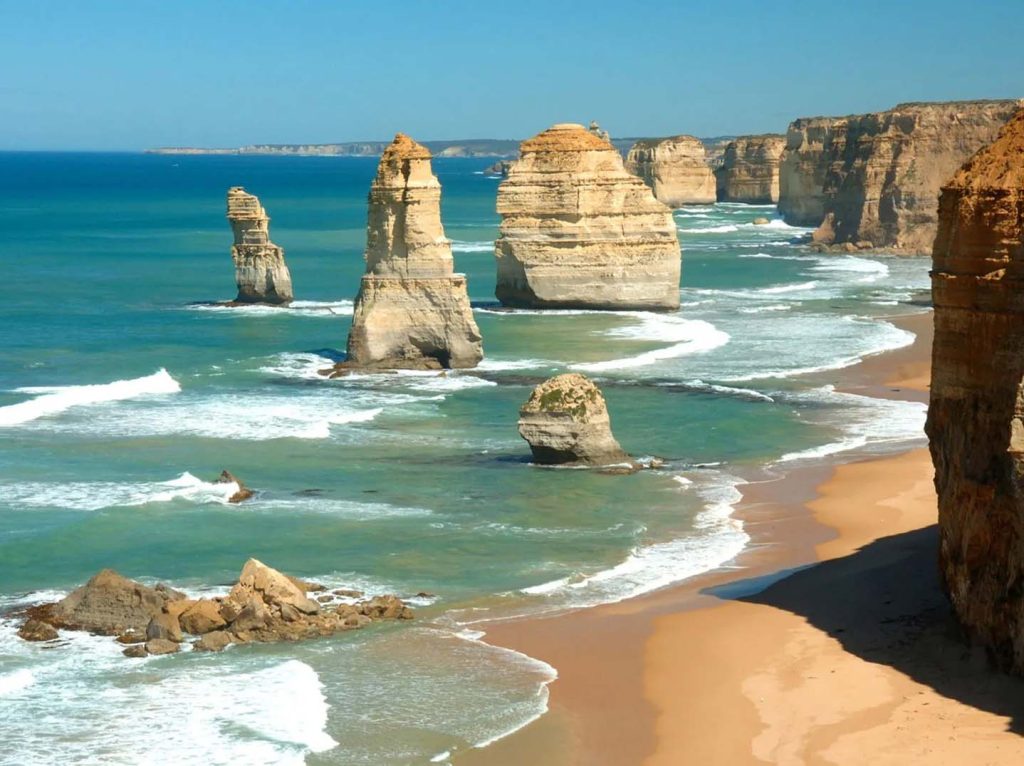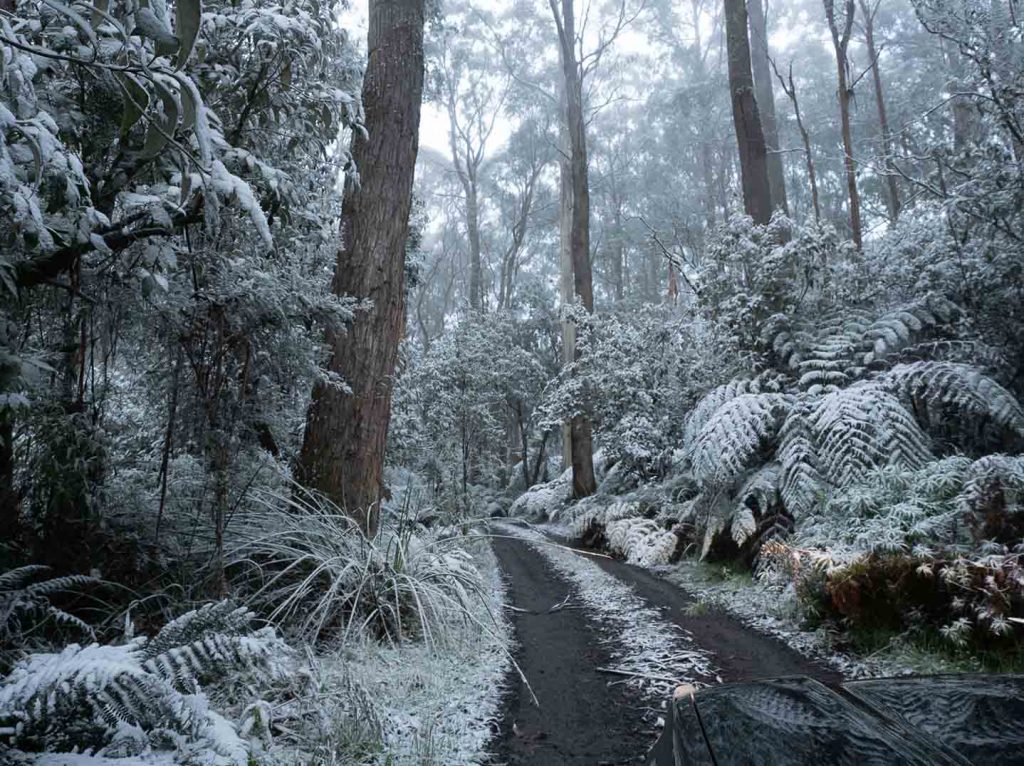The end of winter in Australia wasn’t as bone-chilling as I had imagined. In late August, the sun pierced through the sparse clouds over Victoria, casting a golden warmth on the rugged coastline. I stood in front of a rental car, behind me the still-sleeping streets of Melbourne, and ahead of me—an eagerly anticipated journey along the Great Ocean Road, culminating at the iconic sea stacks of the Twelve Apostles.
This wasn’t going to be a rushed sightseeing tour, but rather a slowly unfolding feast for the eyes and soul. Every curve of the Great Ocean Road, every scenic stop along the way, seemed to be patiently waiting for the right moment to be discovered and lit by the sun.
Starting Point: Early Morning in Melbourne, a City’s Awakening
It was a Friday when I set off. The sky was just beginning to brighten as I finished washing up in a cozy Airbnb in the Collingwood district. The host had thoughtfully left two slices of homemade banana bread and a pot of hot water. I made a cup of black tea, tearing at the bread with a fork as I reviewed my itinerary for the day. The quiet morning wrapped around me like a soft blanket, with only the distant sound of a tram bell reminding me I was still in the heart of a vibrant city. There was a strange comfort in this early-hour solitude, as though the entire city was holding its breath before releasing me into the open road.
The drive from Melbourne’s city center to Torquay, the official starting point of the Great Ocean Road, takes about an hour and a half. Torquay is one of the birthplaces of Australian surf culture, and the Great Ocean Road itself is like a long art corridor connecting charming coastal towns, forests, cliffs, and natural wonders. As I merged onto the highway, anticipation buzzed through me. The urban scenery faded gradually into a softer palette of fields and trees, where the geometry of city blocks gave way to the randomness of nature’s design.
Once out of the city, the landscape opened up quickly. Mist-covered farmlands stretched into the distance, and now and then a kangaroo would leap across the road. Nick Cave’s Into My Arms played from my playlist—a gentle, ethereal melody that served as a soft prologue to the road ahead. The music seemed to merge with the faint fog outside, wrapping the journey in a film-like atmosphere. I rolled the window down slightly to breathe in the scent of damp earth and morning dew. It was the kind of morning that promised discoveries.
First Surprises: Bells Beach and Split Point Lighthouse
My first stop was Bells Beach. Although it wasn’t the prime surfing season, a few wetsuit-clad daredevils were still diving into the surf without hesitation. I sat on a bench at the lookout, my scalp stung by the cold sea wind, yet I couldn’t bring myself to leave. The waves crashed rhythmically against the shore, as if telling me the ancient story of these waters. The ocean was a slate-gray sheet, constantly folding and unfolding, and the surfers looked like tiny, brave figures etching their marks onto it. The rugged cliffs surrounding the beach framed the scene like a living postcard. I felt a sudden urge to sketch or write, just to trap a fragment of this moment.
Heading further west, I arrived at the famous Split Point Lighthouse, a white sentinel standing silently on the cliff’s edge for over a century. That day, heavy clouds loomed in the sky, but occasional sunbeams pierced through, turning the lighthouse into something sacred and dreamlike. It felt like I was witnessing an old guardian watching over the endless waters, weathering every storm with quiet resilience. A few seagulls circled above, their cries carried by the wind as if echoing through history.

I wandered down a lesser-known trail behind the lighthouse to a small lookout. From there, the Southern Ocean unfolded before me like a vast blue parchment. The wind rustled its edges, whispering stories of the sea. The cliff dropped sharply beneath my feet, and I felt the full weight of the vastness in front of me. No buildings, no roads—just sky, sea, and a horizon that stretched into the unknown. I stood still for a long time, letting that wild, untamed beauty imprint itself on my memory.
A Slower Pace: Lorne, Kennett River, and the Rainforest Retreat
Lorne was the town where I lingered the longest. Nestled between mountains and the sea, this art-filled coastal village had colorful galleries, boutique stores, and cozy cafés lining its streets. I stopped at a café called The Bottle of Milk, ordering a flat white and a plate of scrambled eggs with avocado toast. From my window seat, I watched locals strolling leisurely by, dogs frolicking on the beach—it felt as if the whole world had slowed to Lorne’s pace. There was no rush here, only the gentle rhythm of waves and the warmth of friendly nods from strangers. I browsed a small gallery afterward, losing track of time among vibrant coastal paintings and handmade ceramics.
Near Kennett River, I had the most adorable encounter of my journey—koalas in the trees. They were lounging in eucalyptus trees, some fast asleep, others slowly chewing leaves. I approached softly, trying not to disturb the calm. The silence was only broken by the occasional rustle of leaves and distant bird calls. One koala glanced lazily in my direction before settling back into its branch, reminding me how nature thrives best in peace and stillness. I stood still for minutes, mesmerized by their unhurried existence.
Then came a change of scenery: Great Otway National Park. I detoured to the Maits Rest Rainforest Walk, a pristine temperate rainforest trail. Tree roots twisted like dragon veins, and ferns carpeted the forest floor in lush green. I heard streams trickling, birds calling, and I could almost feel the land breathing beneath my feet. This short walk felt like stepping into another realm—quiet, damp, and mysterious. Moss-covered branches arched overhead, forming a cathedral of green. Every breath I took was cool and earthy, carrying the scent of wet bark and rich soil. It was a world untouched by time.
The Twelve Apostles: Winter Sunset’s Peak Romance
Finally, as dusk approached, I arrived at the day’s most anticipated destination—the Twelve Apostles.
Though only eight of the limestone stacks still stand, their majesty is undiminished. The parking lot was nearly empty, and the air was thick with the scent of salt and damp rock. I walked from the main viewing platform to the Gibson Steps on the eastern side, descending to the beach and gazing up at the towering formations. They stood like sculptures, resilient against time and tide. The wind tugged at my coat, and every wave that crashed against the base of those giants seemed to echo through centuries. It was both humbling and exhilarating to stand at their feet.
The sun sank slowly, gilding the southwestern horizon in gold and crimson. The ocean turned amber, the wind howled in my ears, and yet I felt incredibly calm. In that moment, I understood why so many people travel far and wide to be here—not for photos or check-ins, but to witness nature sigh in that fleeting interplay of light and shadow. It was like watching a slow farewell kiss between sky and sea, lingering yet inevitable. I didn’t want it to end, but I also knew its impermanence was what made it beautiful.

Overnight in Port Campbell: A Quiet Harbor’s Warm Embrace
As night fell, I drove about 20 minutes to Port Campbell, a tranquil seaside town and a popular base for Twelve Apostles visitors.
I stayed at a cabin lodge called Anchors Port Campbell, perched on a hillside with panoramic views of the bay. Inside, warm lighting and minimalist wooden furniture made the room cozy. The bed was thick and soft, and the fireplace crackled gently. Outside, a waning moon hung over the sea, stars scattered sparsely across the sky. The air smelled of plants and ocean.
I sat on the balcony, sipping mulled wine and replaying every twist, stop, and quiet moment of the day. Even with my camera memory card full, I wasn’t ready to stop reliving it all.
Return and Reflection: The Great Ocean Road Is More Than a Route
The next morning, I began the slow drive back. Sunlight filtered through the trees again, mist rose from the hills, and the sea shimmered below. Every stretch of coast, every cliff edge, every grove I passed grew sharper in my memory. I didn’t rush back to Melbourne. Instead, I lingered at every corner—Apollo Bay, Anglesea, little bridges and bends—savoring what I could before it became just a memory.
The Great Ocean Road isn’t just a scenic route. It’s a curve that connects emotional states, an unfolding letter waiting to be read. It has no skyscrapers, no overwhelming commercial buzz, but every stretch feels like a page filled with heartfelt words.And the sunset at the Twelve Apostles? That was the most poignant signature at the end of it all.

